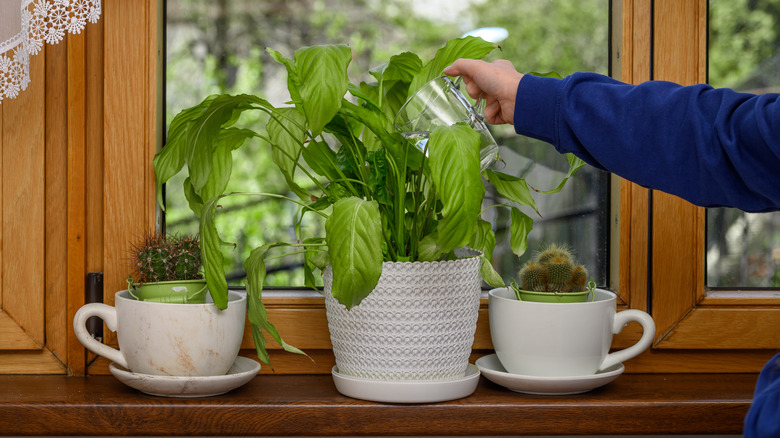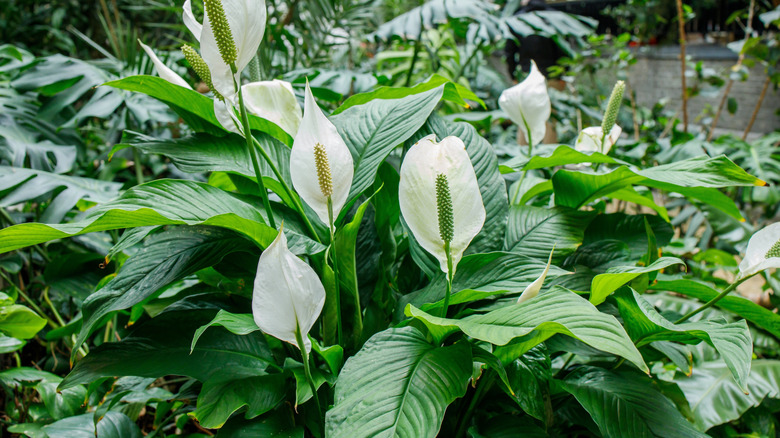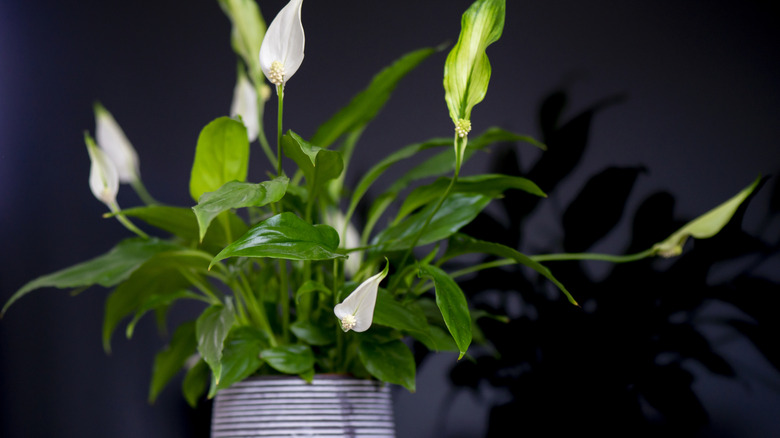The One Thing You Can Do To Help Your Peace Lily Bloom & Thrive Indoors
Does your peace lily (Spathiphyllum), which once showed off beautiful white blooms and vibrant green leaves, seem a bit dull lately? Maybe you're seeing fewer flowers, or the leaves just don't have their usual shine. Plenty of indoor plant lovers run into this issue, always trying to figure out how to help a peace lily flourish. Several factors impact the plant's health, but there's one thing that's incredibly important — keeping the air around it rich with moisture.
This isn't about giving it too much water in the soil, which can cause its own issues. It's about copying the naturally humid conditions these tropical plants love. When you give your peace lily air that's rich in moisture, you're creating a space where it will truly thrive. It will start growing those elegant white flowers that give the plant its name and keep its leaves green and healthy. This basic part of peace lily care is often what turns a struggling plant into a gorgeous addition to your home.
Replicating a tropical habitat through humidity
Peace lilies come from the warm, steamy undergrowth of tropical rainforests in Central and South America. In their native environment, they are accustomed to consistently high humidity levels, often ranging from 50% to 70%. Replicating this moist air indoors is important for their well-being and their ability to produce those distinctive white blooms. One of the common mistakes to avoid is allowing the air around a peace lily to become too dry, especially in heated or air-conditioned homes. When the air lacks moisture, the plant can show signs of stress, such as browning leaf tips or edges, and a general reluctance to flower.
To prevent this, several methods can be used. Placing your peace lily on a pebble tray filled with water allows for a gradual evaporation that increases the local humidity around the plant. Another simple yet effective approach is to group your peace lily with other plants, since they collectively release moisture through transpiration and create a small humid microclimate. For a more direct and noticeable increase in moisture, especially during dry seasons, consider a room humidifier. This device directly adds water vapor to the air, making your peace lily feel right at home. It's a simple adjustment that can be very beneficial for your plant.
Humidity improves the overall health of peace lilies
Consistent moisture in the air has advantages beyond just encouraging more flowers; it plays an important part in the peace lily's overall plant health and resilience. When humidity is at the right level, the plant's leaves are healthy and vibrant, reducing the risk of wilting and preventing mistakes that cause peace lily leaves to turn brown. This stable moisture level also aids in the plant's ability to absorb nutrients more efficiently from the soil, leading to stronger root systems and leaf growth.
A humid environment also helps to keep away common houseplant pests like spider mites, which prefer drier conditions. While watering the soil appropriately is important — allowing the top inch or two to dry out before rewatering to avoid root rot — it's the moisture in the air that really makes a difference in the plant's health. By making humidity a priority in your peace lily care, you are not just helping the plant to flower, but you'll be growing a long-lasting indoor plant that will bring you joy for years to come.


